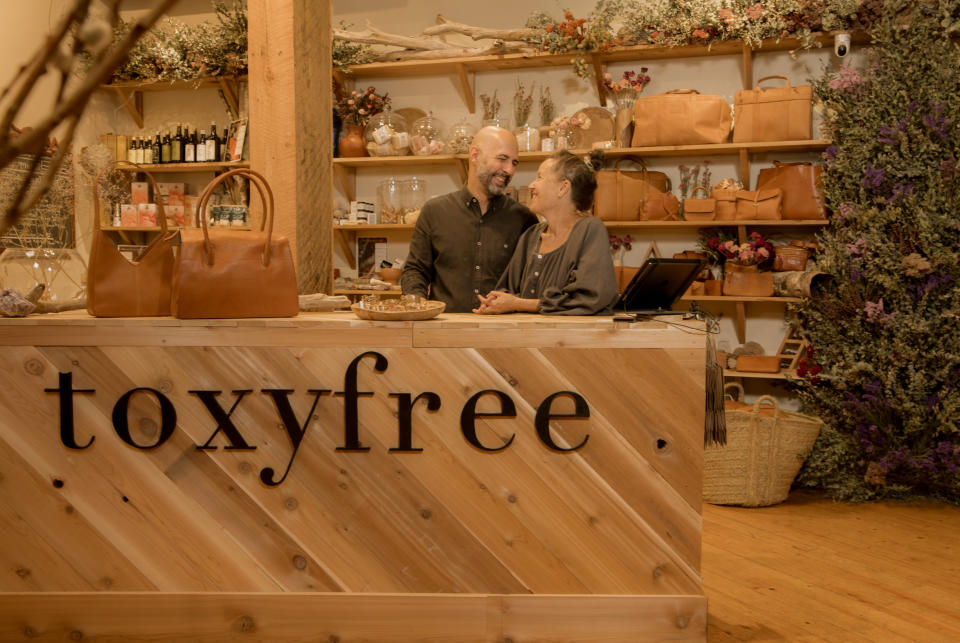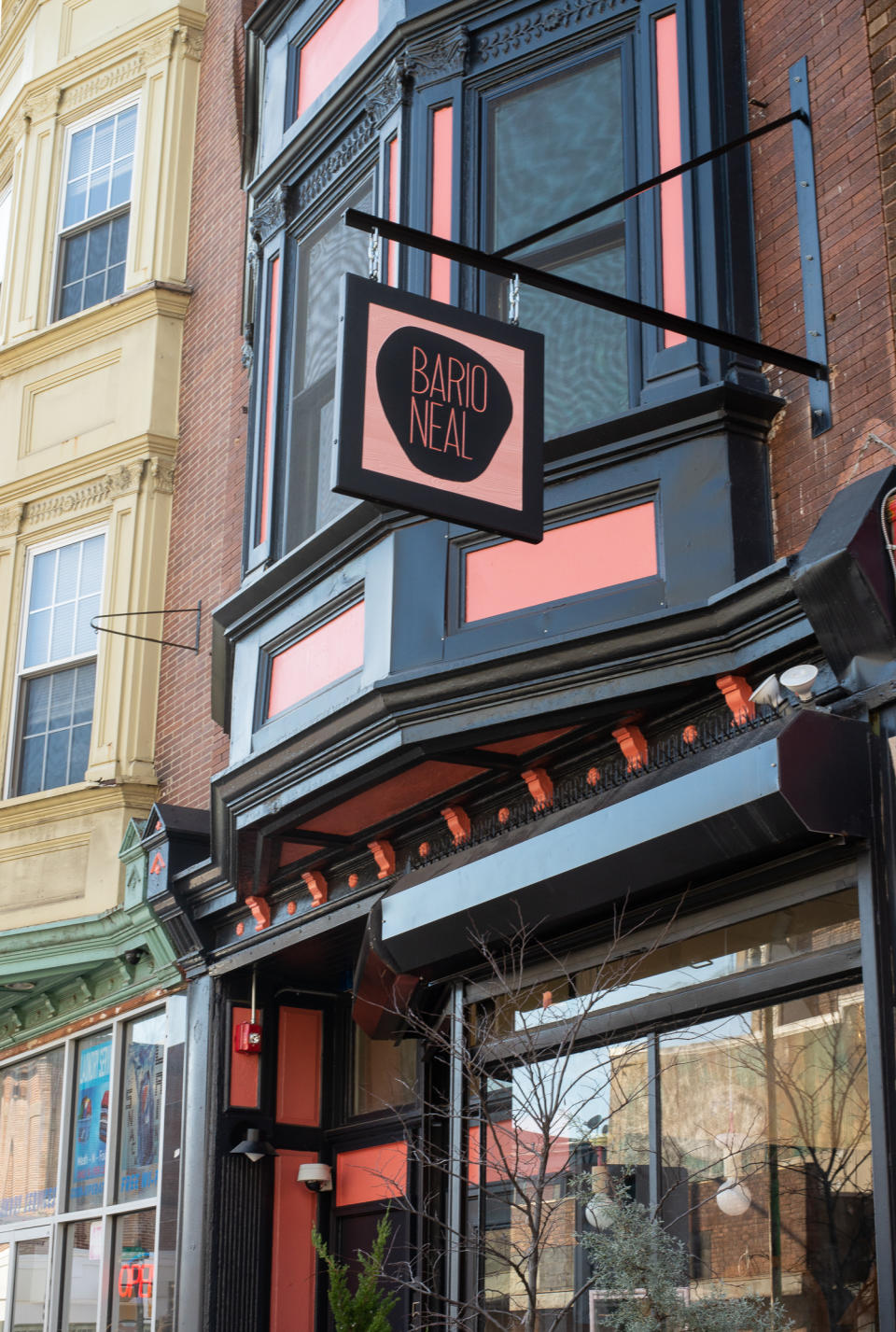Bye Bye Flagships? Tiny Stores Boast Big Eco-gains

While size and scale have long been a marker of success for stores, more and more forward-thinking retailers are making the environmental case for staying small.
Mass merchants still often boast bigger is better, with many pledging to expand footprints after the pandemic. Since 1990, retail development in the U.S. has gobbled up roughly 500,000 acres, or 780 square miles, of land, which is more than half the size of Rhode Island. Big-box stores like Walmart or Target are, on average, 100,000 to 200,000 square feet, according to the Institute for Local Self Reliance. Some cities have even pushed back against the traffic influx of big-box stores, parking overload and strain on local businesses with store size cap limits. In extreme cases, like San Francisco’s North Beach neighborhood, the limit on store size is 1,000 square feet to “preserve and maintain the district’s small-scale, fine grain storefronts,” per zoning ordinances. Thus, a store coming in at under 1,000 square feet is a substantial departure from today’s norms even for, say, a designer flagship or independent boutique.
More from WWD
Given that buildings are a key component of creating a low-carbon future, the case for tiny stores is making ripples. Whether propelled by eco-values or sheer necessity, the tiny store may be here to stay (and not just as a pop-up).
Service, Story First
Beauty brands from Aveda to The Ordinary have been shrinking their footprints without compromise to service. Even department stores such as Bloomingdale’s (with its novel Bloomie’s store) and Macy’s count smaller-format stores as key to growth. Clothing brands like Reformation are dialing down stock keeping units, in theory, having trialed a less-is-more approach to merchandising by only stocking one of each item on the sales floor, relegating the full-size run to the back room.
Indie boutique Toxyfree is an example of micro, eco-friendly stores taking shape. Laura Paulisich is cofounder of Toxyfree, a petite toxin-free and sustainable living retailer that sells fashion, accessories, beauty and more. The 300-square-foot permanent retail store is located in Stillwater, Minnesota, and boasts a range of eco credentials.
For one, the store earned a Gold Seal Green Business Award — which is a selective award for businesses and change agents — and is an active member of organizations like Plastic Pollution Coalition, Eco-Packaging Alliance and Green America. Toxyfree uses only compostable tissue, paper products and tape. Any boxes and packaging are reusable.

“Our store may be tiny, but it is significantly sustainable,” Paulisich said. “We’ve curated a selection of the most beautiful and healthy items for a stylish, toxin-free lifestyle. For instance, our vegetable-tanned leather bags not only are exquisitely crafted and safe to use, but they also come with a lifetime warranty. Customers can even trade their ‘pre-loved’ bags for a new one or receive a discount on their next purchase.”
Beauty is also aiming to achieve a spa-like feel in a more petite format. Though the average salon size is roughly 1,500 square feet, Aveda’s Shanghai Taikoo Li Qiantan retail store clocks in at under 645 square feet. It is billed as a sustainability-focused renewal space for body and mind. The format combines Aveda’s vegan high-performance products with a high-touch, sensory head spa experience. The store received the highly regarded Leadership in Energy and Environmental Design (LEED) Platinum Certification for Retail Interior Design and Construction.
Having opened last August, the location is already ripe with performance data. It reduced energy consumption by more than 18 percent compared to other Aveda stores, which the company said it has achieved by installing high-efficiency lighting and heating, ventilation and air conditioning, along with occupancy and dimming controls (meaning lower energy use and bills). Water consumption has been reduced by more than 45 percent, with leak sensor faucets to avoid water waste or dripping. All wood used in the store is Forest Stewardship Council-certified.
In line with TikTok’s latest fascination with head and scalp spas, the store’s product assortment spans Aveda’s Invati Advanced and Scalp Solutions collections, among other products and franchises. The store, even in its tiny size, also boasts a head spa room with 45-minute head spa services, described as a “facial for your scalp.”
Jeweler Bario Neal’s Philadelphia retail store comes in at the regal size of 750 square feet. The average leasable retail store in Philadelphia is about 5,190 square feet, per insights from real estate listing website LoopNet (or nearly seven times the size of Bario Neal’s storefront, making it petite by comparison). Though the store is less about certifications, it has a secondhand appeal to match its handcrafted and ethically sourced rings, bands and fine jewelry.

“When choosing our partners to build out our retail spaces, it was important to us that the ideology of our jewelry — slow fashion, sustainability and ethically sourced materials — are also reflected in the showroom design and furnishings,” said Bario Neal cofounder Page Neal. “As a result, we used eco-flooring of marmoleum material [a souped-up linoleum], efficient lighting and fixtures, [embraced the] utilization of salvaged materials, a water efficiency tank, and eco-friendly products like soaps, sanitizers and cleaning supplies. We also used local artisans to design and build our display cases and furniture, so that the two showrooms share a similar aesthetic and ethos. All of our chairs are vintage pieces that we have sourced from our favorite local thrift stores, in an effort for upcycling and circularity.”
Fewer Materials, Lower Carbon
The Information Technology and Innovation Foundation found that U.S. buildings alone (including electricity use) account for 34 percent of the country’s greenhouse gas emissions. This is due to the constant purr of fossil-fueled machines, lights aglow and simply put, things like having the refrigerator (or A/C unit) running.
Climate change is affecting every inhabited region across the globe, and the crisis will intensify without major intervention. This is why governments and businesses are recognizing that carbon neutrality is essential for a livable future. And the built environment, and every building block within, plays a crucial part.
“Carbon neutrality is also the carbon in your products,” said Greg Hale, cofounder and principal at The Catskill Project, which is a carbon-neutral living community in upstate New York.
Hale was formerly the director of energy efficiency finance for the Natural Resources Defense Council and is keen to see building logic transformed in both retail and residential design. The Catskill Project is one of the many architectural projects in upstate New York devoted to cleaner living and taking the emissions out of the built environment. This is achieved through passive home design — a certification (from Passive House International and its U.S. subsidiary) that denotes a new way for building that prioritizes orientation for climate zone (positioning a home to the sun so it stays cool in summer and warm in winter), air sealing, continuous insulation, elimination of thermal bridges and energy recovery ventilation system and low-VOC paints (meaning they emit fewer harmful gases upon drying).
Though not all the same, materials like steel, concrete and aluminum take a hefty toll on the environment.
Tiny store logic serves that less really is more. The Catskill Project’s Hale said tiny homes (and stores) offer distinct advantages. “It’s pretty straightforward. You need fewer materials [and] you have less space to heat and cool.”
Best of WWD

 Yahoo Sports
Yahoo Sports 